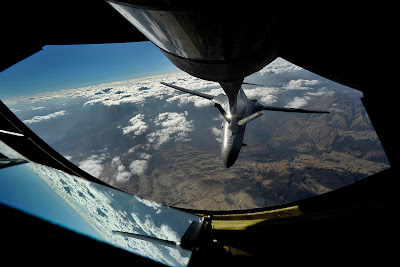 |
| Credit: U.S. Navy. |
DOD prepares for potential sequestration
by Senior Master Sgt. David Byron
Air Force Public Affairs Agency
12/10/2012 - WASHINGTON (AFNS) -- The Office of Management and Budget has instructed the Department of Defense to pursue internal planning to meet required budget cuts if sequestration goes into effect Jan. 3.
"We are at the very start of this process," said Dr. George Little, acting assistant secretary of defense for public affairs, during a Pentagon press availability here, Dec. 5. "We don't have all the details firmed up. Naturally, we hope very much that sequestration will be avoided and we don't enter that phase."
Sequestration is a mechanism enacted by Congress that will initiate severe across-the-government budget cuts if Congress and the president are unable to pass a budget that meets the requirements of the Budget Control Act of 2011.
For the DOD, sequestration would cut the defense budget by $500 billion over the next 10 years. These cuts would be in addition to the nearly $500 billion in cuts, during the same time frame, already directed by the 2011 BCA.
DOD officials have already been considering possible effects of sequestration, including communicating impacts to the DOD work force.
"Our focus has been on examining the potential impacts of sequestration," Little said. "We know what the potential impacts might be, and that helps us create a baseline for what we need to plan against."
He explained that although the core of the effort this month is planning against the possible cuts, officials still hold hope that Congress and the administration can come to a resolution avoiding sequestration.
If the cuts do go into effect Jan. 3, Little said the DOD should still have the first couple of months in 2013 to determine the best way to handle the effects.
"Not every consequence of sequestration would occur on Jan. 3," he said. "People will still come to work, we think, at this stage. This will be a phased-in approach to dealing with sequestration, if it were to take place."
Whatever the effect, he said DOD officials are committed to communicating the issues to the internal DOD community as soon as they are clear.
"We have a lot of internal constituencies to reach out to -- service members, their families and the civilian employees of the Department of Defense -- and we're talking active, Guard and Reserve," said Little. "Three million people work inside this department. One out of 100 Americans work for the secretary of defense. That is a big number and it's a big communication challenge should sequestration take effect."
Little said he has stood up a communication task force to take part in the planning process.
"We expect, through our planning efforts, to identify not just numbers, but also how we communicate it to our three million-person workforce, and prepare them for what may come down the pike," he said. "We're going to try to do what we can, as quickly as possible, to define precisely who we need to talk to and when."













.png)

